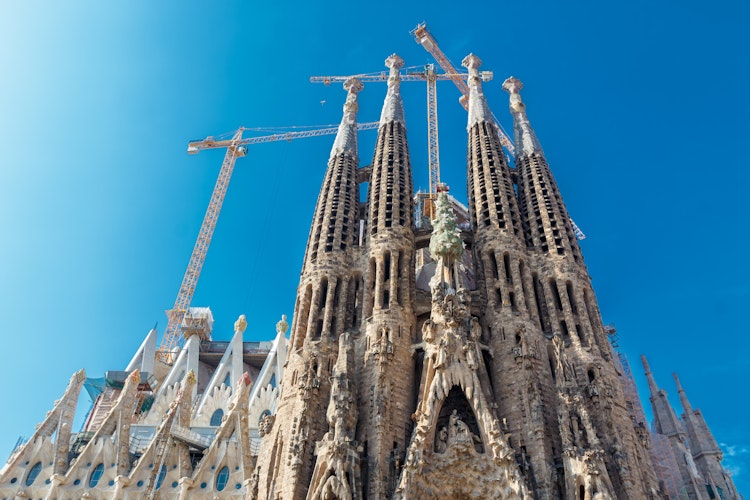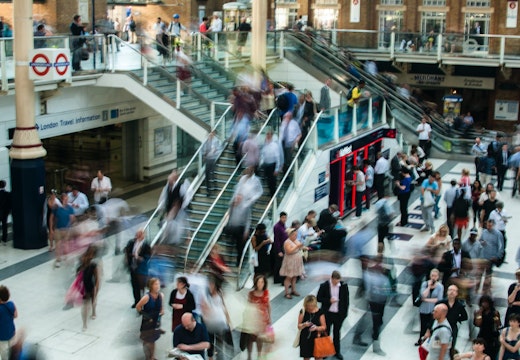Green Sky Thinking: why work buildings should never be finished
Amid economic turmoil, sustainable initiatives are the first to get the chop. But advocates of new thinking from a green perspective suggest it can provide timeless answers to current property problems
When should you consider a building finished? The answer is never – as I learnt when I participated this year in a Green Sky Thinking quiz event held in London at structural and civil engineers Expedition. If you think that the building is finished on practical completion or topping out, then you’re wrong.
The (green sky) thinking goes that the buildings with the best environmental credentials are those that are constantly being adapted and are thus never finished.
This goes against the grain of the way most office buildings are currently developed and promoted. There is usually great fanfare at their handover and opening – the complete solution to working life is heralded, fixed in time, place and space. But the messy reality of how innovation really works tells us something different.
Adapting constantly to needs
Take the famous Building 20 at Massachusetts Institute of Technology (MIT) in Boston, which underwent constant changes throughout its 55-year existence. A temporary wooden structure hastily erected during World War Two on MIT’s central campus, it never received a formal name but become an incredible incubator for scientific breakthroughs – from radar to microwave.
Due to its low-key, temporary nature, it could be chopped and changed by its occupants – research groups, student teams and so on – in highly creative and productive ways. All very different from many of today’s highly finished workplaces that want to encourage innovation but sometimes only succeed in stifling it.
Mind you, 55 years of tinkering around with an unfinished building is small beer when you consider Gaudi’s Sagrada Familia in Barcelona (135 years of tinkering so far). The current architect on the project, Jordi Fauli, announced in October 2015 that construction is 70 per cent complete and the project has entered its final phase of raising six immense towers. The towers and most of the church’s structure are to be completed by 2026, the centennial of Gaudí’s death.
But the prize for the longest period of tinkering with an unfinished building – 500 years – must go to the Palazzo Pubblico in the Tuscan city of Siena. Construction in the Gothic style began in 1288 and continued until 1310. Additions were made during the 14th century, but most significantly in the 17th century when the side wings were raised to meet the central section – extensions that are an early example of neo-Gothic architecture.
Self-repairing building materials
It seems that adapting buildings over vast periods of time epitomises the greenest of green sky thinking – quite the opposite of our tendency to knock down and replace rather than renew. And if you answer the question – when will building parts be able to repair themselves? – by suggesting some future date, you’re wrong on that too. Building parts have apparently been repairing themselves for millennia.
The Ancient Egyptians used lime mortars with self-healing properties in the pyramids at Giza, religious temples and residences. So did the Ancient Romans; and 4,000-year-old Indian traditional structures like Mohanjo-Daro were built with lime mortar. In addition to lime mortars and renders, there are other commonplace materials that can self-heal such as ordinary Portland cement concrete or weathering steels.
Ancient prefabricated construction
Then there is the question: what are the first examples of prefab construction? If you make reference to post-war housing in your answer, you’re way off the mark. Aside from the Sri Lankan structures of the Sinhalese kings, the Statue of Liberty and the Crystal Place, one can apparently see signs of prefabricated construction in the Sweet Track, an ancient timber causeway in the Somerset Levels and built in either 3806 or 3807 BC.
And then there is Stonehenge. Oh really? Yes, indeed. Stonehenge – according to an analysis by the author of Solving Stonehenge, Anthony Johnson – displays a mirrored symmetry and an undisputed alignment with the solstices, which can be regarded as the axis of that symmetry. Based on this interpretation, the monument is understood to have been designed off-site, largely prefabricated and laid out to conform to an exact geometric plan.
I’m grateful to my friends at the Expedition engineering firm for all this new-old knowledge, but Green Sky Thinking is not just an excuse for an architectural version of Trivial Pursuits. It offers a serious perspective on how we design, build and manage our office property.
Could it be that, in the rush to consign even recent buildings to history, junking and rebuilding according to the newest fad or fashion, we run the risk of ignoring the environmental lessons that centuries of architecture hold for us? At a time when economic constraints have put many corporate sustainability moves on hold, is it too much to ask that companies do some green sky thinking of their own in 2018?








